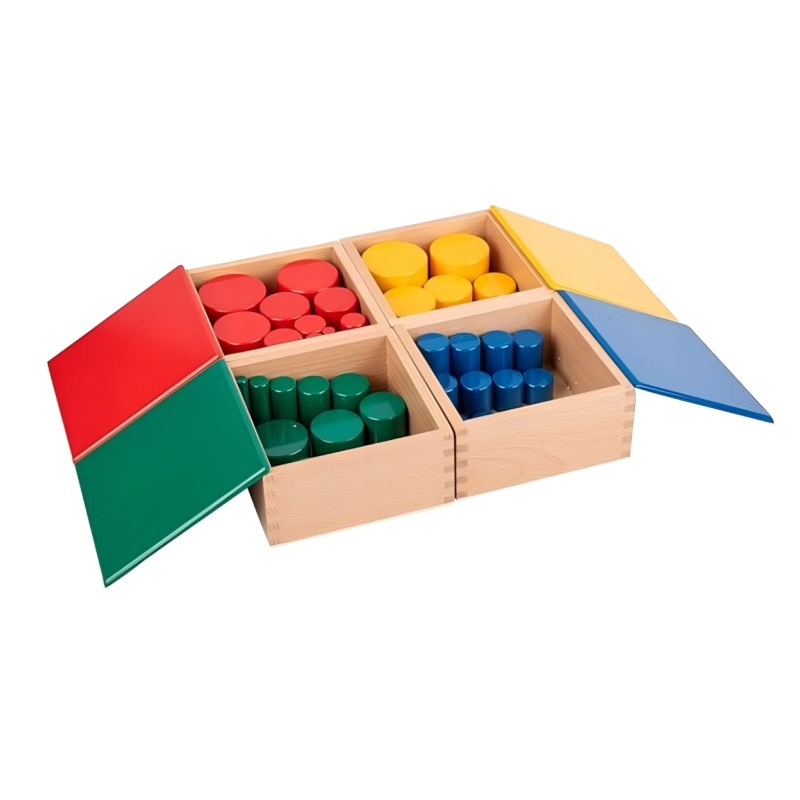
Cylinder Blocks A020
A020 Cylinder Blocks
Materials:
Set 1 (Block 1): Ten cylinders varying in height and diameter, from tall and wide to short and narrow.
Set 2 (Block 2): Ten cylinders varying in height and diameter, from short and wide to tall and narrow.
Set 3 (Block 3): Ten cylinders varying in diameter only.
Set 4 (Block 4): Ten cylinders varying in height only.
Preparation:
This is an individual exercise, which can be done on a table with a table mat or on the floor with a floor mat.
(Note: Work cycle to be observed.)
This presentation can be carried out in three stages, advancing from one stage to the next as the child becomes competent.
(Repeat the presentation for each of the four blocks of cylinders, progressing from Block 1 to Block 4 as the child masters each block.)
Presentation:
The Directress demonstrates how to carry the cylinder block to the table using both hands, holding the ends of the block.
Stage 1:
The Directress sits beside the child and places a cylinder block in front of them.
She removes the cylinders from the block, holding the knobs with a three-finger (pencil) grip, starting from the largest to the smallest.
Each cylinder is placed in front of its corresponding socket.
After a brief pause, the Directress returns the cylinders to their sockets, from largest to smallest.
The child may be invited to assist from the third cylinder onwards.
The exercise is performed without dropping the cylinders and with minimal noise.
Stage 2:
Repeat Stage 1, but place the removed cylinders randomly.
The child must then find the correct socket for each cylinder.
Stage 3:
Take the largest and smallest cylinders and introduce the following terms:
Block 1: "Fat, thin"
Block 2: "Short, tall"
Block 3: "Fat, thin"
Block 4: "Short, tall"
Three Period Lesson:
Return the cylinder block to the shelves, holding it with both hands at the ends.
Points of Interest:
The primary objective is for children to successfully use each cylinder block, allowing them ample time to achieve this.
Seriation can be challenging for young children, but the Directress's demonstrations and the visual cues of the sockets aid in the process.
Purpose:
Develop the child's visual perception of dimension.
Develop the child's coordination of movement.
Provide controlled experiences in seriation.
Introduce basic mathematical language.
Indirectly prepare the child for reading and writing.
Strengthen the child's pincer grip.
 Knobless Cylinders (Set of 4) A030
Knobless Cylinders (Set of 4) A030
